The dream of building your creative agency from the ground up is more than just exciting – it’s a journey brimming with endless possibilities. If you’re an entrepreneur targeting to launch one, buckle up, as you’re in for an interesting ride.
According to the Commerce Institute, about 5 million businesses are being born in the United States every year, and guess what? You can play a crucial role in shaping their creative side.
Now, maybe you’ve just had a burst of insight. Or, perhaps you’re in a conundrum as you think about the hurdles you’ll have to jump over when starting your business. If you’re leaning towards the latter, worry not – we’re here to guide you through the essentials of starting a creative agency.
TL;DR Summary
Before we get down to the ins and outs of it, we’ve rounded out the essential steps we’ll cover later in this blog.
- Define Your Niche and Services
- Conduct Market Research
- Create a Business Plan
- Choose a Business Name and Legal Structure
- Obtain Necessary Licenses and Permits
- Set Up Your Business Finances
- Build Your Team
- Develop Your Brand Identity
- Create an Online Presence
- Set Up Your Workspace
- Network and Build Client Relationships
- Launch Marketing and Promotional Activities
- Continuously Review and Adapt
What is a Creative Agency?
A creative agency lives up to its name by providing creative services to its clients. These often encompass various solutions, such as advertising, branding, and graphic design.
What Does a Creative Agency Do?
Creative agencies collaborate with clients to help them establish a distinct identity and a dominant market presence, whether online or offline.
These agencies have teams of marketing professionals like graphic designers, copywriters, and others who can realize a client’s creative objectives.
Compared to marketing agencies that aim to improve total revenue, creative agencies usually focus on building a corporate identity.
How to Start a Creative Agency
Starting an agency you can call your own will initially be daunting. With these 13 steps, we’ll walk you through the process of establishing one of your own:
1. Define Your Niche and Services
First things first – identify your niche and services! In a market with tight competition, you must know your defining factor. If you have a penchant for creating memorable ad campaigns, you can be the guiding light for your teams to create them.
Meanwhile, if you can craft convincing copy that resonates with your audience and results in conversions, you can position your agency as a storytelling master in the copywriting niche.
Understanding how these marketing strategies work can give you that much-needed edge. Traditional approaches alone will not keep your agency afloat. You need to be one step ahead by understanding the marketing world and staying up-to-date on the latest trends.
2. Conduct Market Research
Research can never be emphasized enough. Agency owners must understand the current market landscape – is there a field more lucrative than the other? Will there be enough demand for this particular service? Only research can provide you with the answer.
Market research typically involves the following:
- Conducting interviews with potential customers.
- Creating focus groups and asking relevant questions to gain feedback on potential service ideas.
- Performing market segmentation research to categorize your market and tailor your strategies toward a specific category.
- Initiating pricing research to set appropriate prices for your services – prices that clients are willing to pay for your services.
- Executing buyer persona research will give you a better understanding of your target market, ranging from their pain points to their expectations.
By doing your research, you can make informed choices that prime your agency for success.
3. Create a Business Plan
You know how they say never to enter a battle without a battle plan? That same principle applies to businesses, too – except this time, you’re not competing with other soldiers but other businesses. Hence, you’ll need a business plan which contains the following:
| Section | Description |
| Executive Summary | An overview of your business containing your mission, vision, and other agency goals. |
| Market and Competitor Analysis | An examination of the current industry landscape that discusses the market trends, opportunities, and threats that may come your way. |
| Organizational Structure | An outline of the hierarchy and roles within your agency. This section details the responsibilities of roles and reporting relationships between them. |
| Products and Services Offered | A summary of the products and services that your agency provides. It highlights your unique value proposition in the market. |
| Marketing and Sales Strategies | A plan explaining how you intend to promote your agency’s products and services. |
| Operations Plan | A run-through of the day-to-day key operations that help your agency run smoothly. |
| Risk Analysis | An evaluation of potential risks you may face and their mitigation strategies. |
By making a business plan, you have a blueprint to guide you through making crucial business decisions.
4. Choose a Business Name and Legal Structure
Next, establish your business identity with a business name and legal structure. When selecting a business name, choose one that isn’t taken.
You can find this out by checking these databases:
- United States Patent Trademark Office
- Trademark Electronic Search System
- Internet Corporation for Assigned Numbers and Names (ICANN) Domain Name Registration Data Lookup
Just as important as the name is the legal structure. A structure can be a sole proprietorship, corporation, partnership, or co-operative. All of these differ regarding taxes, hierarchy, and other paperwork. So, pick one that fits your situation best.
5. Obtain Necessary Licenses and Permits
Expounding on the legalities of establishing your own agencies, we can’t forget the regulatory requirements of licenses and permits.
Here are some of the requirements you might need to obtain:
| Type of License | Description |
| Business License | A general business license is needed for all businesses, allowing your marketing agency to operate within a specific jurisdiction. |
| Federal Employer Identification (FEI) Number | This license is required if your agency is a corporation, partnership, or has employees. |
| State Business License | This requirement may vary as only some states require an additional license. |
| Home Occupation Permit | A home-based creative agency will need this permit to operate. |
| Signage Permit | A permit is sometimes required for agencies that intend to install signs. |
Awareness of the necessary licenses and permits prevents any regulatory headaches you might encounter when starting your creative agency.
6. Set Up Your Business Finances
Getting your finances in order is a must-do when starting any business venture. This step can begin with opening a unique account for your business to separate personal and business finances.
Also, implementing a reliable accounting system will effectively track your income and expenses. Lastly, be aware of any tax obligations and ensure compliance with them.
7. Build Your Team
There’s no better way to build a prospering agency than assembling a dedicated and competent team. To attract stellar team members, you need to establish your application process to reflect your agency’s value and vision.
Here are some of the best platforms where you can find talented creative professionals:
- Upwork
- Freelancer
- Behance
- Dribbble
- Toptal
Know that the road to hiring exceptional talent will not be easy. By conducting in-depth interviews, creating an attractive careers page, and offering competitive compensation, you can form a team to help your agency succeed.
8. Develop Your Brand Identity
In the vast ocean of competitors in the creative industry, standing out becomes quite a challenge. One way to solve that is to develop your brand identity. What makes your agency unique? What client issues can you solve?
Know your identity and tailor your marketing strategies around it. That way, you develop a unique image and distinguish yourself from other creative agencies.
9. Create an Online Presence
The 9th step cannot be understated – build your online presence! People have never been more connected online since the world transitioned to everything digital. Your online presence includes your website and social media accounts.
However, there’s more to creating an online presence than just building your website and socials and calling it a day. Here’s how you can create a stronger presence on the Internet:
- Provide a seamless user experience on your website.
- Create valuable content in your blog.
- Enhance website security.
- Update your details on all online business directories.
- Take advantage of paid advertisements to increase your exposure.
Remember that this barely scratches the surface of creating a robust online presence. Because online trends and technologies change faster than a blink of an eye, you’ll have to tweak your strategies frequently.
10. Set Up Your Workspace
A well-organized workspace can move mountains for your agency’s productivity. Although having a physical space can provide structure, don’t count out the value of remote work.
When establishing your agency, note that it doesn’t always have to be a go-big-or-go-home situation. You can always implement a remote work setup for those with leaner budgets. Whichever model suits your needs, choosing one that aligns with your business objectives and growth strategy is key.
11. Network and Build Client Relationships
They say it’s not about what you know but rather about who you know – so don’t skip the step of expanding your network, as it can open gateways for opportunities that might not be accessible otherwise.
Just as crucial as expanding your circle is strengthening your client relationships. Of course, your end goal is not to simply build short-term relationships with clients but also to create long-term ones.
By providing exceptional customer support and quality service, you can establish deep connections with clients – increasing your chances of retaining them in the long run.
12. Launch Marketing and Promotional Activities
Scaling your agency will require you to employ effective marketing strategies. Whatever you choose, it will ultimately be a combination of these strategies that will be most effective:
- Implement social media campaigns to attract your target market.
- Partner with influencers to increase visibility.
- Introduce exclusive promotions and limited-time offers to drive sales.
- Launch targeted pay-per-click (PPC) campaigns to reach a particular demographic.
Remember: consistency is key. If one strategy doesn’t seem to work, then attempt another one. Analyze your marketing metrics carefully and refine your strategies as needed.
Find this step intimidating? Enroll in the mentorship programs at Prospecting On Demand to help elevate your marketing strategies with the assistance of seasoned mentors who bring a wealth of experience and industry insights.
13. Continuously Review and Adapt
Building on our previous point of adjusting your marketing strategies, know that what has worked before may not always be the recipe for future success – thanks (or no thanks) to the challenging and dynamic nature of the field of marketing.
Data can shed more light on consumer behaviors and industry trends, allowing you to adapt your business strategies even in the changing times. By doing so, you place yourself ahead of the curve.
How to Market a Creative Agency
Here are some ways you can market your creative agency:
- Develop a unique value proposition.
- Showcase a strong portfolio.
- Build a responsive website.
- Implement content marketing.
- Engage in influencer partnerships.
- Focus on search engine optimization (SEO).
- Engage with both online and offline creative communities.
- Utilize social media platforms to highlight your creativity.
How to Run a Creative Agency – 20 Best Practices
Find about more about the 20 best practices of running a creative agency:
- Encourage Continuous Learning and Professional Development.
- Nurture a Positive Company Culture and Employee Well-being.
- Protect Intellectual Property and Respect Confidentiality.
- Foster a Creative and Collaborative Work Environment.
- Stay Updated with Industry Trends and Technologies.
- Develop a Robust Marketing and Branding Strategy.
- Seek Feedback and Continuously Improve Services.
- Regularly Review and Optimize Business Processes.
- Set Realistic Goals and Track Performance Metrics.
- Maintain Open and Transparent Communication.
- Manage Finances Prudently and Plan for Growth.
- Offer Customized and Client-Centric Solutions.
- Emphasize Quality Over Quantity in Your Work.
- Celebrate Successes and Learn from Failures.
- Be Adaptable to Change and Client Needs.
- Implement Effective Project Management.
- Network and Build Strategic Partnerships.
- Cultivate a Diverse and Inclusive Team.
- Prioritize Strong Client Relationships.
- Establish a Strong Online Presence.
Your agency is poised to succeed by following these practices, even in the highly competitive creative industry.
Types of Creative Agencies
Learn more about the several creative agencies you can choose from below:
- Full Service Digital Agency
- Advertising Agency
- Content Marketing Agency
- Branding Agency
- Design Agency
While this isn’t an exhaustive list, these are the most common types of creative agencies you’ll encounter.
Frequently Asked Questions (FAQs)
Still have some questions about starting your creative agency? We’ve got you covered!
What roles are there in a creative agency?
The roles in an agency are contingent on your offerings. Creative agencies have creative directors who oversee creative initiatives and teams. Conversely, they have art directors who do the same, except for art services.
They manage teams composed of other key roles, including copywriters, web designers, project managers, video editors, and more.
How much does a creative agency make?
A report from Promethean Research claims that a creative agency makes an average of $163,000 per full-time employee. Why this metric? It’s widely used among agencies to evaluate their finances, measuring overall profitability and efficiency.
Additionally, the report mentioned that this metric has consistently risen since recording began in 2015. The report also added that the profit margin of creative agencies averages at 16%. These figures indicate a positive signal for those looking to start their own agency.
Conclusion
Starting your own creative agency is an exciting journey requiring strong commitment. Following the steps above, you can overcome challenges smoothly and position yourself ahead of others.
If running a successful creative agency has always been your primary intention, Prospecting On Demand is here to turn it into reality. You get to build your business and scale it beyond 7-figure MRRs – all while gaining a partner who believes in your success. What more can you ask for? Schedule your free assessment today!









